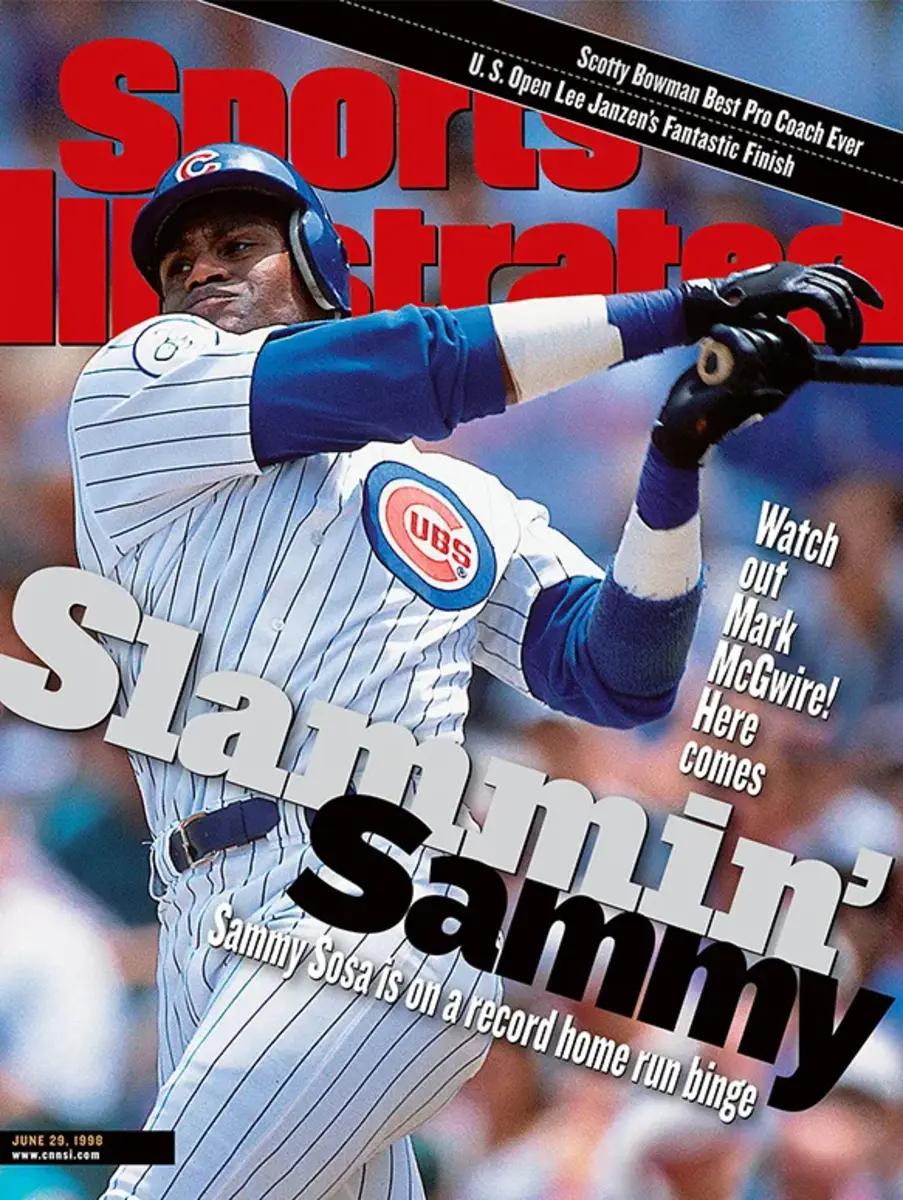SI:AM | The WNBA’s Triple-Double Explosion
Good morning, I’m Dan Gartland. The Angels have to be the biggest bummer in baseball.
In today’s SI:AM:
🏀 The first triple double in Lynx history
⚽ Naomi Girma’s journey to the USWNT
If you're reading this on SI.com, you can sign up to get this free newsletter in your inbox each weekday at SI.com/newsletters.
Moriah Jefferson makes history
Triple doubles are rare in the WNBA, but are becoming increasingly less so.
With a rebound in the final seconds of last night’s blowout win over the Wings, Moriah Jefferson recorded the first triple double in Lynx franchise history (13 points, 10 rebounds and 10 assists). It’s just the 14th triple double in the history of the league (which is now in its 26th season), but the third this campaign.
The shorter length of WNBA games (40 minutes, as opposed to 48 in the NBA) has made it difficult for players to stuff the stat sheet, but that’s changing. Of the 14 triple doubles in league history, five have occurred during the past two seasons and eight over the past six seasons. (For a closer look at why triple doubles are more uncommon in the WNBA, check out this recent article by Chantel Jennings of The Athletic.)
This season, 36-year-old Candace Parker became the oldest player in WNBA history to record a triple double and the third to accomplish the feat multiple times. Then, three weeks later, Sabrina Ionescu joined the multiple triple-double club with the second one of her career and became the first player in league history to record a triple double over the first three quarters. (Courtney Vandersloot and Sheryl Swoopes are the other players with multiple triple doubles.)
After recording her second triple double May 22, Parker said she felt games like hers are going to become less rare.
“I think the game is changing,” Parker said. “I think we’re gonna very soon see this on a nightly basis. We’re going to see those playmakers who have the ball in their hands. So I don’t know how long I’m going to hold on to this. But I’m grateful for this opportunity to play on a team where we can spread the wealth.”
If anyone is prepared to usher in the WNBA’s new era of triple doubles, it’s Ionescu. She holds the NCAA record (men’s and women’s) for career triple doubles with 26 and joined the WNBA’s exclusive multiple triple-double club in just her second full season in the league. If Parker is right that the game is changing, Ionescu will be at the forefront of that change, but games like Jefferson’s show that she won’t be alone.
The best of Sports Illustrated
Today’s Daily Cover, by Gwendolyn Oxenham, is a profile of USWNT center back Naomi Girma, the daughter of Ethiopian refugees:
“She is 5'7" and Ethiopian American, with a wide, radiant smile and a svelte, silky way of moving. Like all great players, she seems a touch clairvoyant, solving the play ahead of time. One prescient shift left or right and the forward has nothing, no opening, no space, no ball. The Stanford grad with a 3.92 GPA majored in symbolic systems—which has something to do with the science of the mind and the development of artificial intelligence—and watching her read space, you sense she’s gleaned a superior understanding of both angles and human impulse.”
Jon Wertheim and Chris Almeida discussed Serena Williams’s loss at Wimbledon and what it means for her career. … Pat Forde examines the Big 12’s decision to go off the beaten path in hiring its new commissioner. … Michael Pina has seven questions that will define the NBA’s free-agency period. … Chris Herring writes that, after opting in to his contract for next season, Kyrie Irving needs to prove he’s worthy of another team making a significant investment in him.
Around the sports world
The Knicks are reportedly set to offer Jalen Brunson a four-year, $110 million contract. … The Red Sox blew a ninth-inning lead in Toronto while their unvaccinated closer, Tanner Houck, sat at home in Boston. … Angels pitcher Archie Bradley has a broken elbow, likely as a result of falling over a railing while trying to join the brawl with the Mariners. … Bryce Harper will have surgery to repair his broken thumb and is reportedly targeting an August return. … The ACC is changing its football schedule structure to do away with divisions. … The Senate Judiciary Committee released a letter in which it calls into question MLB’s antitrust exemption.
The top five...
… moments from last night in baseball:
5. Christian Walker’s walk-off fielder’s choice for the Diamondbacks to complete a comeback from down 6–0 tied for the largest comeback in franchise history.
4. Matt Olson’s two-homer game for the Braves.
3. Vladimir Guerrero Jr.’s walk-off single for the Blue Jays.
2. Mike Trout and Shohei Ohtani’s back-to-back homers.
1. Trout’s reaction to his teammate tipping pitches. The Angels lost 11–4.
SIQ
Hall of Fame slugger Harmon Killebrew was born on this day in 1936. Where in Minnesota is there a monument to the 522-foot home run he hit with the Twins?
Yesterday’s SIQ: What was the margin by which the Supreme Court ruled in Muhammad Ali’s favor in the case Clay v. United States?
Answer: 8–0. Thurgood Marshall recused himself because he had been involved in the case in his previous role as solicitor general.
Ali had been convicted of draft dodging in 1967 when he refused induction into the United States Army on religious grounds, and the draft board refused to consider him a conscientious objector. An all-white jury found him guilty, and he was sentenced to five years in prison. While out on bond pending appeal, he was exiled by the boxing world.
“Blank,” Ali said, when asked how the Supreme Court’s ruling made him feel. “Blank. It’s like a man been in chains all his life and suddenly the chains taken off. He don’t realize he’s free until he get the circulation back in his arms and legs and start to move his fingers. Then all at once he knows the chains gone and he can move about freely again. I don’t really think I’m going to know how that feel until I start to travel, go to foreign countries, see those strange people in the street, then I’m gonna know I’m free. But it ain’t meant that much to me yet.”
But the court came very close to ruling the opposite way. When the justices cast their votes in April 1971, they were 5–3 against Ali. Justice John Harlan was assigned to write the majority opinion. Thomas Krattenmaker, a clerk for Harlan, told the justice that he felt the court had reached the wrong conclusion. The court believed Ali’s assertion that he would only fight in wars declared by Allah meant that he was being selective in his rejection of the war in Vietnam. Krattenmaker argued that it was more akin to a ’55 case in which the Supreme Court ruled in favor of a Jehovah’s Witness on the basis that a “theocratic war” is strictly hypothetical.
Krattenmaker succeeded in getting Harlan to change his vote, and the four other justices who had initially voted in favor of upholding the conviction eventually changed their minds as well.
From the Vault: June 29, 1998

There’s a line in Tom Verducci’s 1998 cover story about Sammy Sosa that is laugh-out-loud hilarious in retrospect: “He popped home runs like vitamins last week: three on Monday, one on Wednesday, two on Friday and two on Saturday.”
Sosa was popping more than vitamins in the 1990s, but Verducci’s article is also a reminder that performance-enhancing drugs can’t magically make a baseball player better.
After hitting 40 homers in just 124 games in 1996, Sosa entered the ’97 season with high expectations. Verducci relays an anecdote about Sosa being asked in spring training about the possibility of hitting 50 homers and responding, “Why not 60?” But Sosa struggled that year:
“His was most probably the worst year ever by anyone with 36 dingers and 119 RBIs. Behind that impressive-looking facade, Sosa hit poorly with runners in scoring position (.246), was virtually an automatic out on any two-strike count (.159), whiffed more times than anyone else in the National League (174), had a worse on-base percentage than Atlanta Braves pitcher Tom Glavine (.300 to .310), and again ran with such recklessness trying for 30-30 (he didn't get there, finishing with 22 steals in 34 attempts) that manager Jim Riggleman was once forced to scold him in the dugout in full view of the television cameras. Oh, yes—and the Cubs finished 68-94.”
Before the 1998 season, he worked more closely with Cubs hitting coach Jeff Pentland. He improved on the things that increased muscle mass can’t help, like his average in two-strike counts and working more walks.
But the real reason Verducci was writing about Sosa was the home run binge he went on in the month of June. He hit 20 dingers that month, three more than the previous June record and two more than the record for any month. Of his 34 hits that month, 20 were homers. It was that explosive month that thrust Sosa into the home run chase with Mark McGwire that set the baseball world aflame.
Check out more of SI’s archives and historic images at vault.si.com.
Sports Illustrated may receive compensation for some links to products and services on this website.
